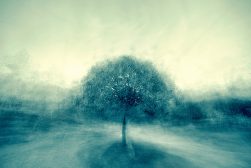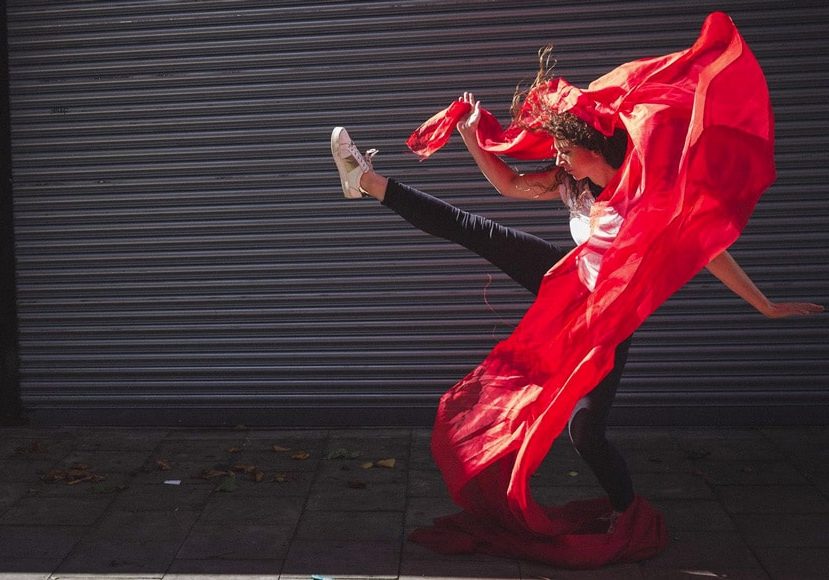
Guide to Aesthetic Photography
Learn how to understand and use aesthetics in photography to build your style and become a better photographer in this thought-provoking guide.
Learn | Photography Guides | By Andy Day
Aesthetic photography is a term that has a number of different meanings, describing photography that is “pretty” through to images that are artistically challenging and engaged.
There are a lot of different understandings of the term, but learning what it can mean can push you towards creating photographs that are as beautiful and striking as they are complex.
If you want to develop as a photographer and produce images that have depth and meaning, it’s worth giving some thought as to what can make your photography aesthetic and why having an understanding of aesthetics can improve your photographs.
Table of Contents
What is Aesthetic Photography?
“Aesthetic” comes from the Greek word aisthētikos which originally meant “of or relating to the senses.” Over the centuries, the meaning of aesthetic has changed, particularly through the thoughts and writings of German philosophers during the 18th and 19th centuries.
Over time, aesthetics came to refer to the nature of beauty, with deeply complex and philosophical discussions about what makes something beautiful, how we understand art, and how we create it.
Much like “art” or “culture,” “aesthetic” is a word that has a number of subtly different definitions, and while we might feel like we know what it means, trying to explain it quickly becomes complicated.
If you’re asking yourself, “What makes a photo aesthetic?” keep in mind that entire books have been written on trying to define “aesthetics” so there’s definitely no short answer to this question!
“Aesthetic” doesn’t quite mean “beautiful” (although it can!) and nor is it simply “artistic.” Instead, it sits somewhere in between and doesn’t necessarily mean either.
Plus, you could argue a work of art can have aesthetics without actually being aesthetically pleasing. For this reason, you can create a body of photographs that are aesthetic without any of them being truly attractive in a conventional sense.
Some photographers would argue that aesthetic pictures have to be beautiful, but this isn’t always the case – see also our guide to beautiful photography ideas.
As you can see, any explanation can become philosophical and aesthetics is an aspect of art that continues to be discussed by philosophers, artists and academics.
At a basic level, if a photograph is aesthetic, it is simply pleasing to the eye, positive in appearance, eye-catching, and able to trigger an emotional response in a viewer.
At a more complex level, aesthetics is bound up in culture and society and depends on experience and judgement. It often includes technical ability, style, and can sometimes refer to concepts that are not present within the artwork itself.
For some, aesthetics is something that can be superficial, about creating photographs that are pretty to look at, perhaps applying a personal style and using recognised rules of composition such as the rule of thirds, rule of odds, the golden ratio, and more.
This approach can create a photograph that is appealing and aesthetically pleasing but doesn’t necessarily go beyond what can be seen.
At another level, an aesthetic photograph can mean an image that takes a viewer beyond the surface and begins to ask questions about not just what is being presented, but how we see and experience a work of art, or how we perceive and feel emotionally about a subject or a concept.
For example, a simple snapshot of a water tower can be aesthetically pleasing: it can be well-composed, shot in beautiful light, edited to emphasise a complementary colour scheme, and feel geometrically satisfying to the viewer.
It can be striking, and you can have it printed beautifully on fine art photographic paper, so in many senses, it could be said to be an aesthetic photograph.
With this in mind, consider the photographs of Bernd and Hilla Becher, who for more than four decades photographed water towers and coal bunkers across Europe.
If you take one of their photos on its own, it’s just a grey, bleak photograph of a slightly odd structure shot in flat and uninteresting light.
However, taken as a series, it’s an investigation into the industrial landscape; one that views these strange constructions as sculptures that have similarities and subtle differences, and gives an insight into the dramatic changes which took place following the end of the Second World War.
Seen together, these photographs have an eerie beauty to them that talk to us about our past. To many viewers, they will not be aesthetically pleasing, but they have tremendous artistic value and are held in permanent collections by major museums and art galleries around the world.
Bernd and Hilla Becher were photographing on large format cameras, using high levels of skill to create images that contain huge amounts of detail. This method was very technical and required a lot of expertise.
You might argue that aesthetics in photography requires a lot of knowledge and while this will often help, it’s not necessarily fundamental to aesthetic photography.
As a parallel, you might think of punk music which emerged in the 1970s and ’80s as a response to the complex, virtuoso performances of progressive rock.
Punk is characterised by anti-skill, of a rejection of elitist music in search of a raw aesthetic that was capable of conveying something that was more authentic to what young people were experiencing at the time.
This rough, organic and visceral style came from genuine experiences, and its lack of refined, technical expertise made its expression somehow more real. Wrong notes and a lack of musical ability were not a barrier, but instead became part of what shaped its aesthetics.
What’s the difference between aesthetics and style?
The difference between aesthetics and style in photography is a subtle one and parts of it may overlap. The distinction is also subjective, and you might encounter different opinions on how they differ and where the boundaries lie.
For some, style is about having a consistency to your work, perhaps characterised by a certain subject, choice of equipment, your editing choices, or a way of shooting.
For example, your style might be to shoot your subject matter up close and with a wide-angle lens, or using lots of leading lines to guide the viewer’s eye.
Alternatively, it might be about specific color combinations, mixtures of textures, or a particular use of light, whether that be in a studio, on the street, or out in nature.
Over time, this style shapes your work, making it distinctive. This is a deliberate way of working — combining your choice of gear, subject matter, and methodology — that you have developed over time to create work that is almost like a signature of how you see the world around you.
Aesthetics is then about how this style shapes an understanding of what it is that you are photographing — how do your style and your subject matter relate to one another?
Aesthetics can describe how you are using a particular style of shooting to represent or engage with your subject matter so that it invokes a response in your viewer that goes beyond just its appearance.
This doesn’t necessarily need to be some deep, academic or philosophical reason; instead, it can just be a connection that links your style and subject choice so that they work together.
13 Tips for Creating Aesthetic Photography
1. Develop your style
Style shapes aesthetics, and while you might not be able to differentiate them deliberately, you can make conscious decisions on how to develop and evolve your style through education and experimentation.
Developing your style can mean seeking to progress your knowledge and expertise in any aspect of your photography, whether it’s learning different means of lighting portraits in a studio, through to gaining a deeper understanding of how to process your images.
You could read up on color theory, the fundamentals of composition such as the rule of thirds, or learn about what it means to work in black and white — and more.
All of these will broaden your understanding and give you more potential to create aesthetic pictures.
2. Read about art history
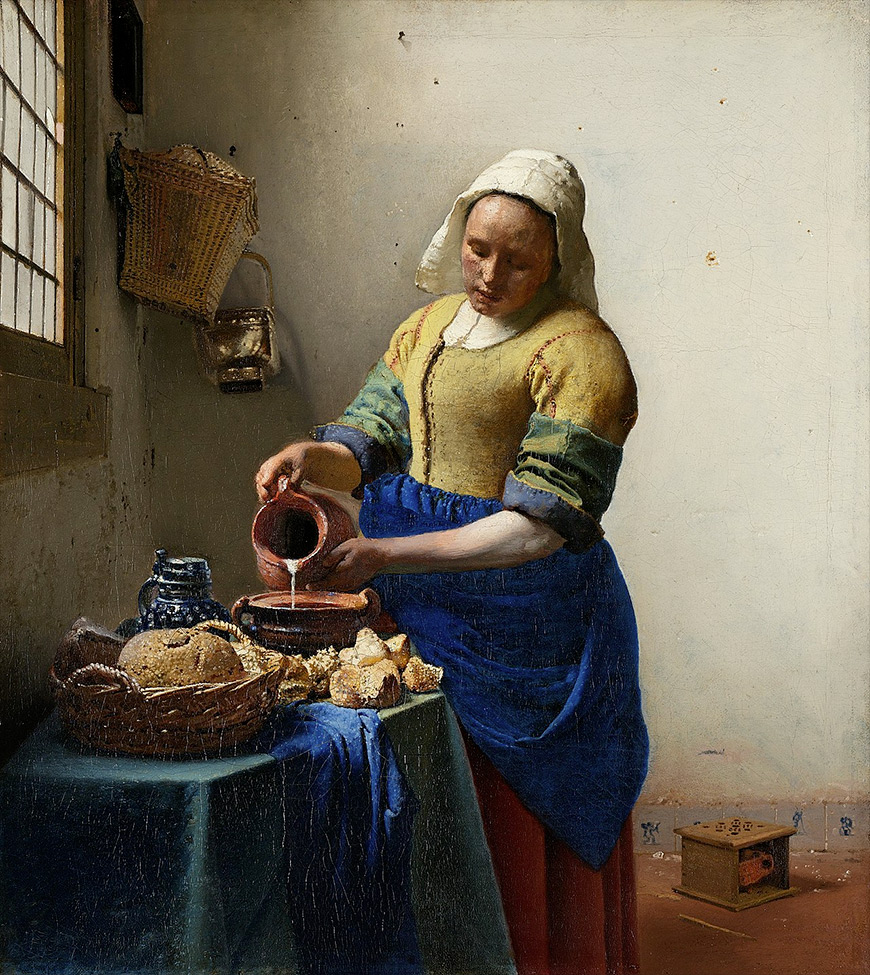
The Milkmaid by Johannes Vermeer. Public Domain.
Establishing an in-depth knowledge of art history and photography’s place within it can lead you to be more reflective in your work, bringing a level of understanding and consideration to how you create your photographs.
Going back to the example of Bernd and Hilla Becher, their work draws deeply on the mechanical nature of photography and how the world is represented through imagery, tapping into the writings of philosopher Walter Benjamin.
This doesn’t mean that every photography project you undertake needs to be informed by centuries of art history.
Having an awareness of how art practices relate to your work will allow you to develop as a photographer, and discover ideas that you might otherwise never have come up with.
It can feel intimidating at first but there are plenty of books that are intellectually expansive without being pretentious or dependent on existing knowledge.
To get started check out Ways of Seeing by John Berger. It’s short and easy to read and is one of the most influential books on art that has ever been written.
There’s an accompanying BBC television series, presented by Berger himself, which conveys some complex ideas but with a mainstream audience very much in mind. It’s available in four parts on YouTube and has a wonderfully 1970s feel.
3. Take a lot of photographs
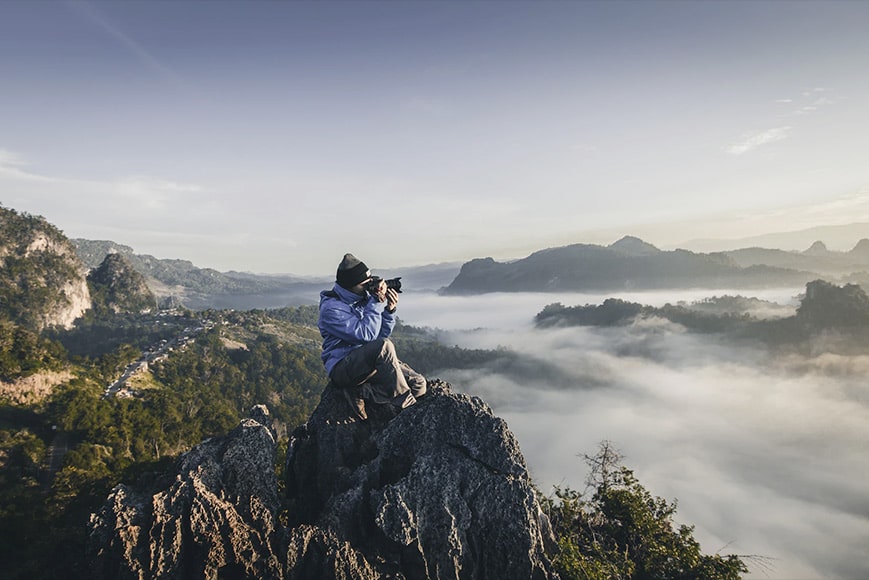
© Alif Ngoylung
As a general rule, successful photographers don’t establish a style or an aesthetic straight away. Instead, it’s something that evolves over many years as a result of taking thousands and thousands of photographs.
We’re fortunate today that, shooting digitally, we’re able to take countless photographs without having to worry about the cost of processing rolls of film and having prints made.
This doesn’t mean shooting without thought, however. There’s a balance to be struck between creating photographs to discover what works and what doesn’t, and working with a thoughtful and considered approach.
Both of these methods have their benefits when it comes to advancing your photography.
4. Edit your work
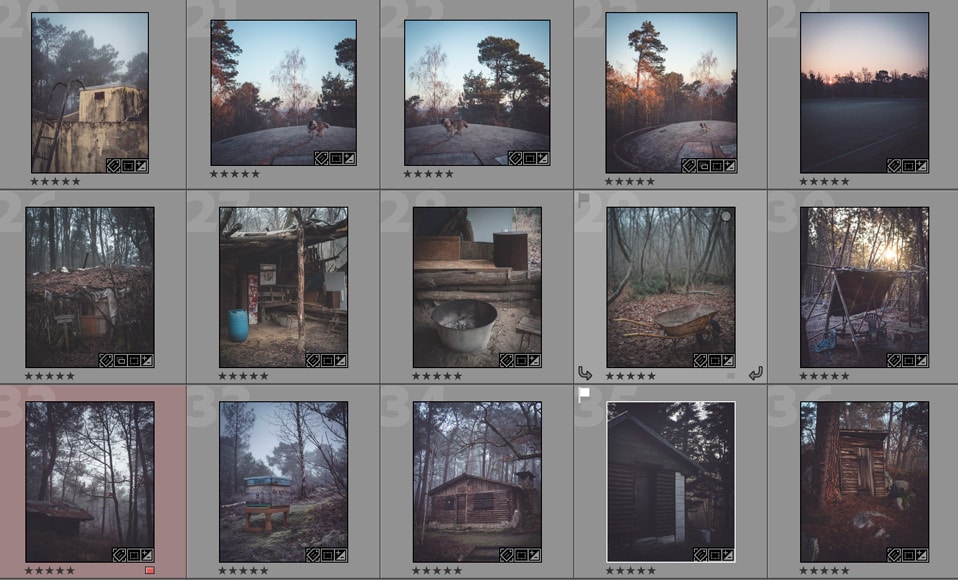
You can learn a lot from taking a large number of photographs, but the key to this practice is sitting down to edit your photographs.
This does not mean post-processing, however — i.e., playing with them in Lightroom, adding presets, or tweaking the contrast.
Editing your work means going through your images and selecting which ones work and which ones don’t.
Sifting through your successes and failures is a valuable learning process, even if you don’t always know why you’re making certain decisions.
Often, we have a subconscious awareness of why one image is right while another is slightly off, and over time you will absorb an understanding, especially when it comes to composition.
Learning the fundamentals of composition can be useful but very few photographers pick up their camera and think to themselves, “Right, I’m going to use the rule of thirds for this photo.”
Instead, their eye instinctively knows how to compose based on the countless photographs that they created — and failed at — in the past.
The editing process is a critical part of helping every photographer evolve.
5. Experiment and fail
Failure is key to progression. Successful artists and photographers don’t stumble upon an aesthetic in creating their famous photos, and nor does it happen the first time.
Instead, aesthetics are the result of countless experiments and failures over a period of time, each one being an important part of the process.
Each false step is an opportunity to learn, take stock, and move forwards.
6. Create a body of work
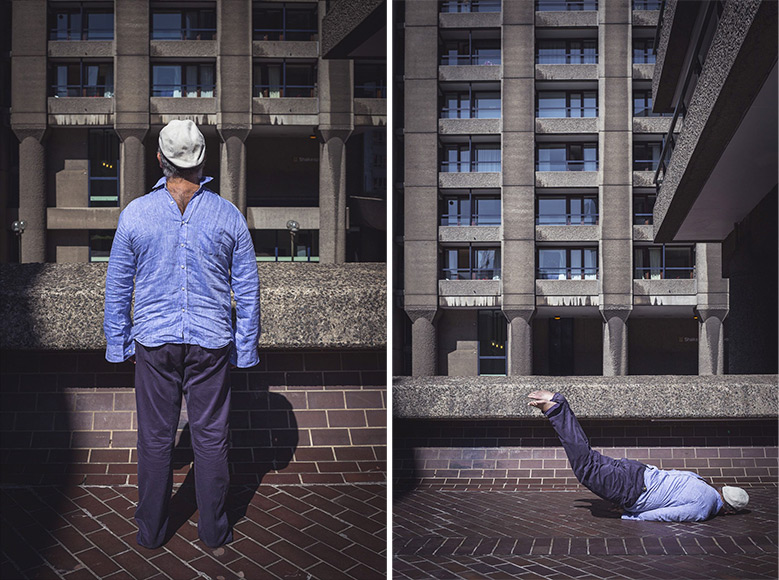
Style and aesthetics don’t exist in a photographer’s individual photograph. As with Bernd and Hilla Becher, aesthetics — shaped by style — is something that emerges in a larger project, often created over a long period of time.
A body of work is often characterised by something that you are passionate about, whether it’s a specific species of bird, a protest movement, or documenting how your own neighbourhood is changing over time.
As much as it might be about style, creating an aesthetic can be about engaging on a personal level with what it is that you are photographing.
This goes beyond simply what it looks like and portraying it in a series of images. It’s about diving into what it is that makes it distinctive and unique, and using your photographs — and photographic style — in order to tell its story.
7. Tell a story
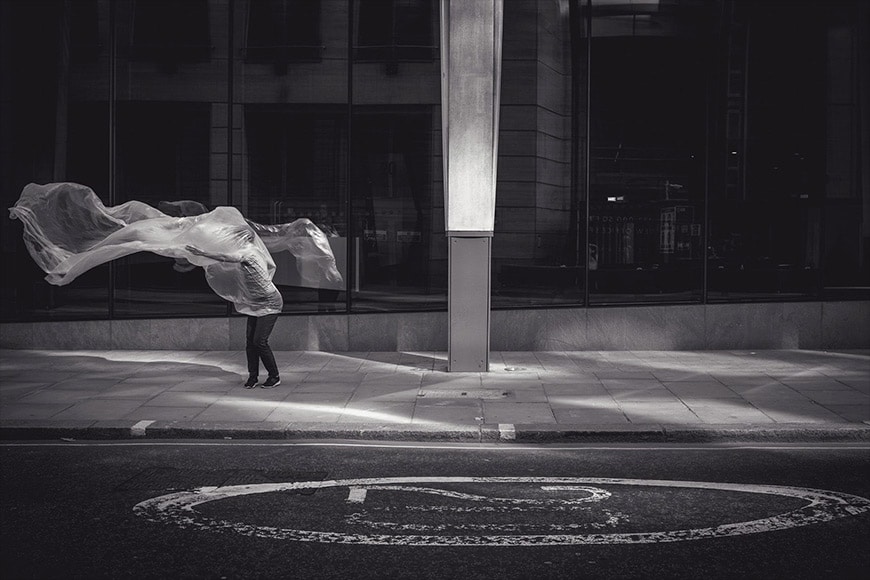
Sometimes it seems that photography can be divided into two categories: the first category is made of images that are preoccupied with the surface, creating something that is absorbed with appearance and without any further interest.
The second category of photography is made up of images that respectfully engage with the subject matter, seeking to bring an empathetic connection between the viewer and what is being portrayed that goes beyond just its appearance.
Obviously, this is a simplification of photography, and this reductive way of looking at it can be elitist. Furthermore, the fact that photography can be disengaged and all about surface is very much a part of why the medium is so powerful.
However, thinking of photography as being characterised by these two categories can be a useful way of looking at it if you want to challenge yourself to go further in your work.
In this sense, telling a story doesn’t necessarily mean creating a narrative; rather, it’s about providing a visual bridge that brings the viewer closer to understanding the experience of a person, or the processes behind what is being portrayed.
It means spending time, researching, and connecting with your subject matter, rather than just jumping in, grabbing a shot, posting it to social media, and then moving on.
8. Visit museums and art galleries

Untitled Rayograph (left) and Lampshade (right) by Man Ray. Public Domain.
Just as learning about art history can open new avenues, so can immersing yourself in work that is challenging.
Many trips to art museums and photography galleries can be confusing, but exposing yourself to new ideas and pushing through the challenges presented by weird and confusing concepts can spark ideas.
It can feel that galleries love using big words and seemingly pretentious explanations, but the vast majority of visitors are just like the rest of us: we go with limited knowledge about the subject and it takes a little time and effort to get to grips with what’s been hung on the walls.
It’s worth the effort; established artists are always looking to the work of others for inspiration, not just in terms of what to create, but the aesthetics behind how it can be created.
9. Go on a workshop with one of your favorite photographers
Established photographers frequently run workshops that are open to anyone and can be excellent opportunities to absorb as much as possible, not just in terms of practical techniques, but also in how the photographer approaches their work as an artist.
The best photographers tend to be incredibly generous with their time and attending photography workshops can be hugely beneficial when it comes to developing your own work.
10. Get a portfolio review

If you can’t attend a workshop, many photographers — and curators — offer portfolio reviews where they will look through your work and then sit down with you to discuss what works, what doesn’t, and where to go next.
These reviews can be eye-opening, and while you might open yourself to some thoughts on why some of your work isn’t as good as you’d hoped, you’ll also receive a load of ideas on where to take it next and finish the session feeling inspired to go and shoot.
See also: how to make a photography portfolio.
11. Get feedback from friends and family
Our friends and family members have watched our progress over the years, and while they might not have the expertise of an established artist or curator, their opinions are just as valuable.
Discuss your ideas, send them photographs, and keep asking for feedback on which images they feel work the best.
If you’re confident that they can be constructive in their criticism, you can also ask for thoughts on which images they don’t like as much.
As discussed, learning from your failures can be immensely valuable, but we can be so caught up in our own bubble that we become slightly blind to our own images.
12. Get feedback from social media

Social media can be a brutal and frustrating platform when it comes to seeking validation for our work as photographers, but with the right approach, it can be a useful tool when trying to develop your aesthetic.
It’s tempting to think of social media as being a portfolio, but this can be restrictive, preventing us from presenting what we see as our “lesser” photographs, and creating a touch of anxiety within us that we constantly have to post our best photos.
Of course, this simply isn’t possible if you’re posting regularly.
Try giving up on only posting your best images. Instead, look at social media as a place to document the evolution of your work and as a platform for testing out new ideas.
This way, platforms such as Instagram and 500px — where viewers tend to quickly forget what they’ve just seen — can be opportunities for gauging a response and seeking out feedback.
This can be far healthier for you as a photographer, as well as being more engaging for your audience.
13. Find your niche

Clearly, you have an enthusiasm for photography, but establishing an aesthetic in your work can be as simple as having a genuine passion for a particular subject.
While it won’t automatically give your photographs something different, everything listed above will flow from being driven by what it is that you are photographing.
Final Words
Aesthetic photography isn’t a simple concept, and there might be a lot of debate over what the term even means.
Whatever your take on it, having an awareness of your work and how aesthetics in photography functions will help you to evolve as a photographer and offer new avenues for creativity.
If you’d like to add your thoughts or if you have any questions, feel free to leave a comment below.








